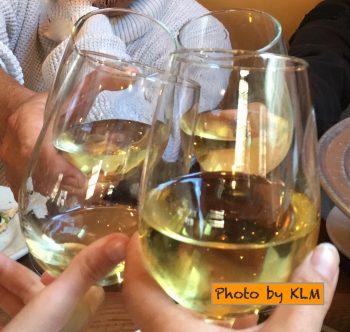Cheers! : How to Toast in Korean Posted by Kyung-Hwa on Dec 13, 2017 in Korean Language, Vocabulary
As the end of the year 2017 approaches, many Korean people will plan a 송년회 (year-end-party) with people around them. During the party, you will notice people raise their glass and often shout “cheers” in Korean. In this post, you will learn several different ways to say “cheers” in Korean so that you can enjoy your 송년회 with Korean friends and co-workers.
건배 is the most frequently used Korean word for cheers. Interestingly, this Korean word 건배 is very similar to Chinese word, 干杯(Ganbei), and Japanese word, 乾杯 (Kanpai), which they both mean “cheers.” You can use this word 건배 with Koreans whether they are older or younger than you are. Therefore, this simple Korean word 건배 will become handy when you drink with your Korean co-workers and friends.
위하여: the direct translation of this Korean word is “for ___”, but its figurative meaning is “wish for _____ .” In many occasions, people will use this simple expression “위하여” by itself while they raise their glass, or they will add something before 위하여, such as “회사를 위하여 ( for the sake of the company) or 우정을 위하여 (for the sake of our friendship), and 건강을 위하여 (for the sake of our health).” 지화자 and 좋다: 지화자 is actually used as an exclamation accompanied with singing or dancing to express excitement. However these two combinations, 지화자 and 좋다 are also regularly used phrase when you clink your glasses with others. When the person leading the toast in the group shouts 지화자, the rest will follow with 좋다 (Love it!) The following examples are equally popular expressions for cheers in Korean. They both originated from three syllable acrostic poems. Consequently, the following explanation will become a helping hand in understating their figurative meanings in Korean.
- 당나귀: its root word 당나귀 means a donkey in Korean, however each letter in the root word means the following.
당 (당신 – you)
나 (I)
귀 (귀한 만남을 위하여 – for our precious meeting)
- 박보검: its root word refers to a famous Korean actor 박보검, however each letter in the root word means the following.
박 (박수 – clap)
보 (보내다 – send)
검 (겁나 수고한 당신께 – for your hard work)
- 청바지: its root word means a pair of blue jeans, however each letter in the root word means the following.
청 (youth)
바 (right)
지 (from now)
Besides the above examples of how to say “cheers” in Korean, you will hear this Korean expression “원샷 “ recurrently. Its literal meaning is “one shot,” and it means figuratively “bottoms up or down the hatch” in English. Thus, when you hear this Konglish word, 원샷, next time, you will know what it actually means. However, remember not to have one too many 원샷 to avoid a terrible hangover the next morning. I hope this post will help you to be prepared to say “cheers” in Korean when you clink your glass with your friends and co-workers, and have a great time together.
감사합니다! (Thank you!)
***Related Vocabulary***
- 송년회 (year-end-party)
- 건배 (cheers)
- 위하여: the direct translation of this Korean word is “for ___”, but its figurative meaning is “wish for _____ .”
- 지화자 and 좋다: 지화자 is actually used as an exclamation accompanied with singing or dancing to express excitement. However these two combinations, 지화자 and 좋다 are also regularly used phrase when you clink your glasses with with others.
5. 당나귀
당 (당신 – you)
나 (I)
귀 (귀한 만남을 위하여 – for our precious meeting)
6. 박보검:
박 (박수 – clap)
보 (보내다 – send)
검 (겁나 수고한 당신께 – for your hard work)
7. 청바지:
청 (youth)
바 (right)
지 (from now)
8. 원샷 (bottoms up or down the hatch)

Build vocabulary, practice pronunciation, and more with Transparent Language Online. Available anytime, anywhere, on any device.




